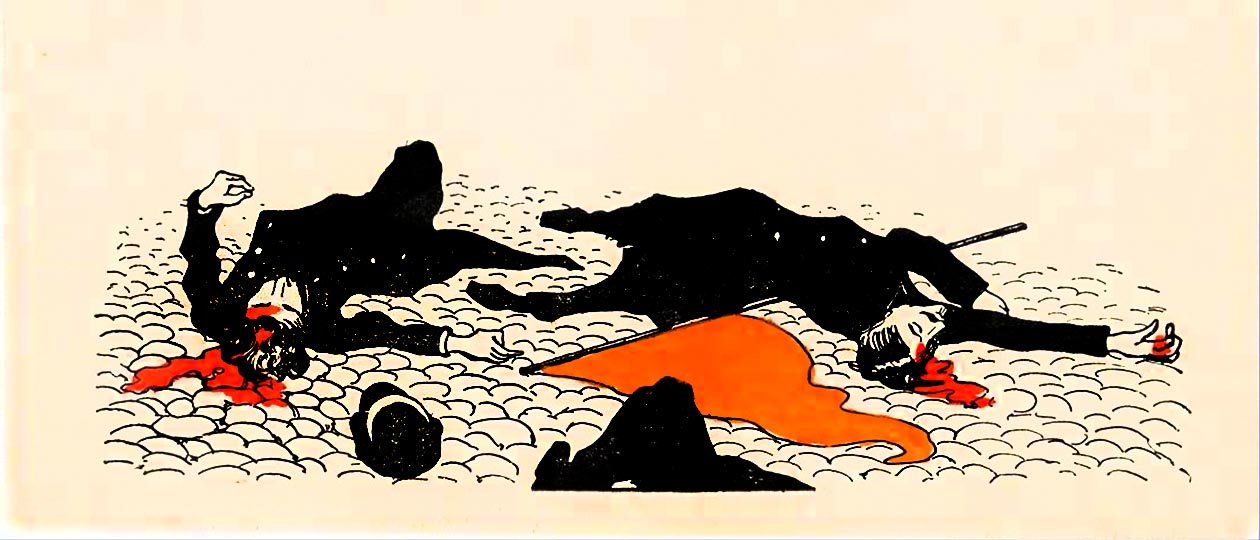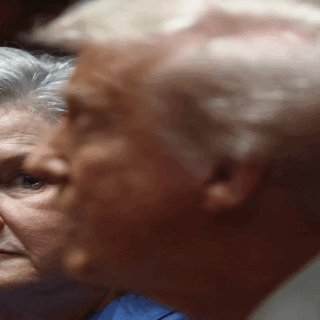
Political terrorism in the Russian Empire is still a very painful subject for many people in today’s Russia.
The reasons for these painful thoughts about terrorism vary. For some people, the sheer enormity of the number of victims—17,000 people killed or wounded between 1901-1911. Other people are shocked by the duration of terrorism between 1866-1911 and how it became a regular of Russian political life.
I suspect that many people in contemporary Russia believe that terrorism played a part in causing the collapse of the tsarist government and in the disintegration of state and society between the February and October Revolutions of 1917. Terrorism was more of a long-term cause of the eventual collapse of the government because the support of liberals for left-wing terrorism and the ambivalent mentality of conservatives eroded the government’s base of support. Furthermore, terrorism was regarded by many members of the government and political parties and movement as a useful form of political struggle to advance different aims and goals. It was this general acceptance of terrorism by government and society that eroded respect for the law and adherence to traditional moral, ethical, and religious norms against killing.
World War One allowed people in all countries, including Russia, to break the moral, religious and ethical boundaries against mass killing. The Russian Revolution and Civil War of 1917-1922 was a continuation of the mass killings of the war years.
Political terrorism in the Russian Empire should not be regarded as a form of “Russian backwardness”. I am currently writing an academic article on terrorism in the United States between 1865-1914. The biggest contingent of terrorist incidents were lynchings and other acts of vigilante justice. If anything, this shows that many Americans regarded their own federal government as too weak to enforce the law and that lynchings and other types of killings represented the true justice of the people in establishing community norms of behavior.
Here we can see how terrorism originates and develops in specific historical conditions in different regions and countries in different periods. Terrorism in Russia between 1866-1911 and in the United States from 1865-1914 differed sharply from terrorism in European countries between 1870-1914. Anarchist and nationalist terrorists constituted the majority of European terrorists.
By contrast, terrorism in Russia featured a crowded playing field of different political parties and movements from 1901-1911. The People’s Will dominated terrorism from 1879-1894. Participants in the wave of terrorism in the early 20th century included Empire-wide parties such as the Party of Socialists-Revolutionaries and both Bolsheviks and Mensheviks from the Russian Social Democratic Workers’ Party; national parties from the ethnic minorities, anarchist movements, right-wing terrorists from the Union of the Russian People and other Black Hundred (far right) movements.
Terrorist violence was not the only type of violence in the Russian Revolution of 1905-1907. Other types of violence included the violence of mass protest movements that were often expressed through uprisings, demonstrations, mutinies in the army and navy, pogroms — mob attacks against Jews and others – ethnic and religious conflicts, politically-motivated killings.
Criminal violence often could not be distinguished from terrorism or the violence of mass protest. In effect, order virtually collapsed during the revolution and the collapse of the state and society would be on an even greater scale between the February and October Revolutions of 1917. Government violence in suppressing the revolution put a stop to most types of violence although terrorism took on a life of its own for several years after the end of the revolution in 1907.
What made terrorism in the Russian Empire somewhat unique was that it was derived from the strained relationships between the government in the person of the autocracy (tsar) and educated society as represented by the intelligentsia, the most politically conscious sector of society and the leader of all political parties and movements.
Note that this conflict between government and society turned into virtual single-handed combat between the two with the mass of the population reduced to being passive observers. Despite assertions by terrorists that they would conduct terrorist acts only in union with mass protest movements, the violence of terrorism and mass movements only intersected in the border regions of Poland, the Baltic provinces, the western provinces in today’s Lithuania, Belarus, and Ukraine, and the Caucasus. Ethnic, social, and religious conflicts in the border regions contributed to the intersection of terrorism and mass violence.
Also contributing to the massive nature of terrorism was the willingness of many liberals to support leftist terrorism because many liberals regarded terrorism as a useful way to extract concessions from the government such as a constitution, political freedom, and a parliament.
Many conservatives took an ambivalent attitude toward terrorism and did little to help the government in its fight against terrorism. Nor did the government exactly appreciate the support many right-wingers were willing to offer. After the assassination of Tsar Alexander II by the People’s Will in 1881, the government suppressed the loyalist organization The Sacred Host out of fears that its members would try to extract a constitution and parliament from the government. The government’s long-standing fear of public initiative always suppressed any attempt to mobilize opponents of terrorism.
In its own way, the government dug its own grave in shrinking its base of supporters by its continual mistrust of public initiative. Nobody embodied this mentality more than the last tsar Nicholas II who created virtually ideal conditions for mass terrorism. Nicholas believed that God had given him power and that only God could take away this power.
Although Nicholas signed the Manifesto of October 17, 1905, granting political freedom and a legislative Duma, he believed that he had signed the manifesto under duress and that he was free to revoke it. Nicholas’ responsibility for enabling mass terrorism should be kept in mind particularly since many publicists and popular authors regard him as a martyr killed by an ungrateful people or by occult forces.
However, the terrorists of the early 20th century bear their responsibility for turning Russia into the birthplace of mass terrorism in the modern world. Leftist terrorists, along with many liberals, regarded the October Manifesto as a sign of weakness by the government and concluded that a few more well aimed blows would bring down the autocracy. What happened was that terrorism took on a life of its own and terrorist acts continued for several years after the revolution was finally crushed in 1907.
Terrorism in the early 20th century turned into waves of indiscriminate killing of anybody associated with the government or propertied classes. The victims included many innocent bystanders. Terrorist “expropriations” — armed robberies of banks, other financial institutions, and individuals—attracted many common criminals who, when arrested, would claim to be revolutionaries.
Many revolutionaries hoped that terrorist acts would provoke the government into taking more severe measures which in turn would ignite a people’s revolution. The government did take increasingly severe repressive measures in crushing its opponents, but no people’s revolution happened.
A major contributor to the uniqueness of terrorism in Russia was the People’s Will whose members assassinated Tsar Alexander II on March 1, 1881. The People’s Will still occupies a special and even honorable place in the history of world terrorism. Even specialists who generally condemn terrorism often make an exception to the People’s Will and emphasize the idealism and courage of its members. Many novels in several languages have been written about the organization and generally focus on the members of the Executive Committee from 1879-1883. However, the People’s Will had dark pages in its history.
The Executive Committee used manipulative and deceitful tactics to win supporters. Most importantly, the People’s Will used terrorism as a pre-emptive strike to prevent Russia from becoming a liberal and constitutional European state. Hours before his assassination, Alexander II agreed to a proposal to bring representatives of local government into the State Council to give advice on proposed legislation.
This could have eventually resulted in the establishment of parliamentary government in Russia. However, the assassination crushed these hopes. Tsar Alexander III promised to rule as an autocrat and the constitutional development of Russia was delayed by 25 years. In its own way, the People’s Will triumphed in preventing the transformation of Russia into a constitutional state.
Future generations of terrorists idealized the members of the People’s Will and concluded that any rejection of terrorism would be an insult to the memory of the martyrs of the People’s Will. The organization truly showed future generations of terrorists that there was no going back. The assassination of Tsar Alexander II showed that a tsar was an ordinary human being who could be killed and who did not possess the immortality of a god.
The members of the Executive Committee of the People’s Will from 1879-1883 still have a certain attractiveness despite everything that we now know about their tactics. In this sense, I still have strongly ambivalent feelings about the People’s Will and I have to take these feelings into account when I write about this organization. Both the positive and negative aspects of the People’s Will have to be explored to come to an objective evaluation of this organization.
I suggest that the activity of the People’s Will is one of the factors that make terrorism in the Russian Empire between 1866-1911 unique in the history of terrorism. The massiveness of terrorism, its long duration, its ability to create a crowded playing field of supporters, the weakness of its opponents were the other main factors that make the Russian Empire the birthplace of modern terrorism in today’s world.
Unfortunately, the history of terrorism in Russia is still a great unknown in the history of world terrorism. Only by creating its proper place in the history of terrorism can we understand what made terrorism in Russia unique.





